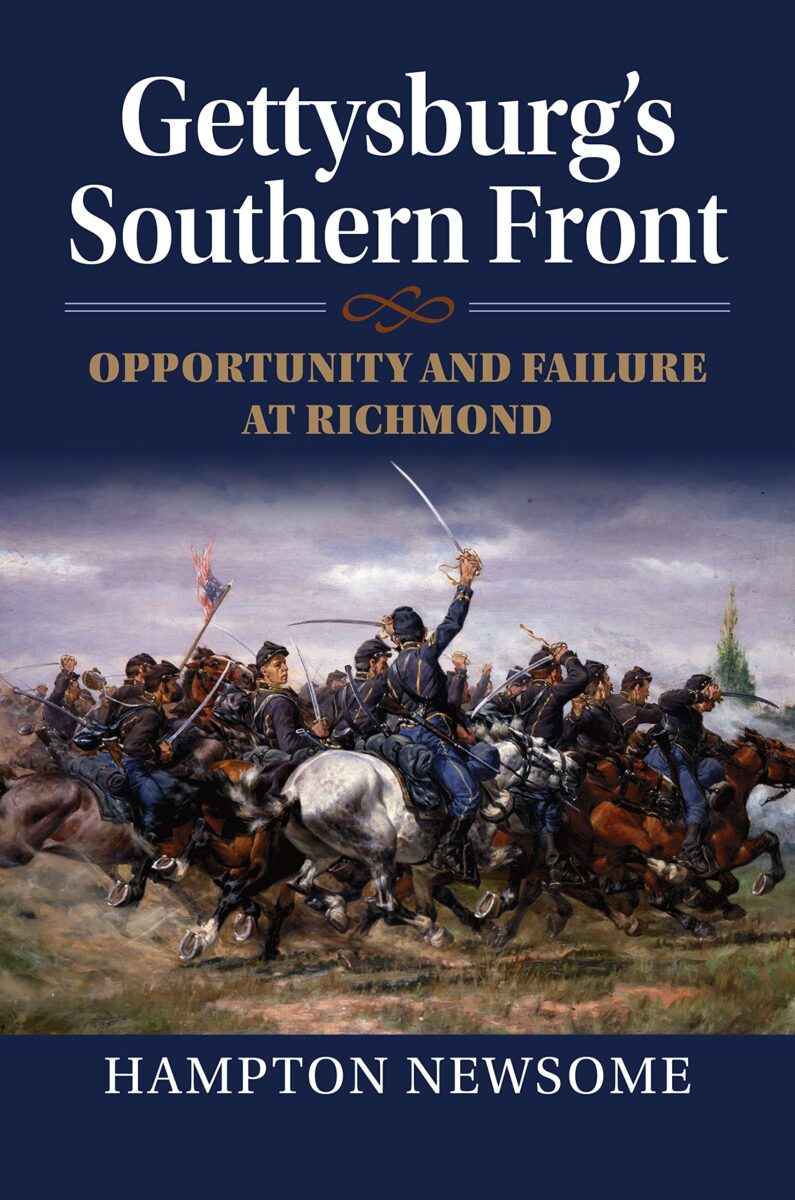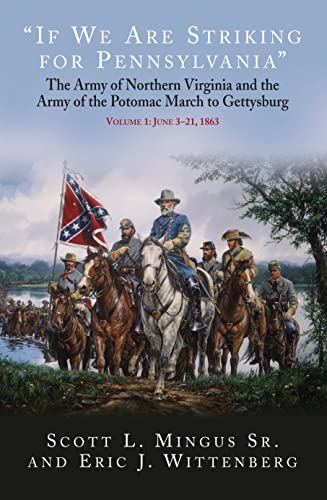Thousands of books have been written about the Gettysburg Campaign, yet talented scholars with fresh insights continue to prove the last has not been said about our most studied military campaign. In Gettysburg’s Southern Front, Hampton Newsome takes readers beyond the fields of Pennsylvania to examine Union efforts to threaten Richmond and its vital railroads in June and July 1863. In doing so, he offers a masterful campaign narrative of understudied military actions, squarely integrating them in the wider scope of the war.
While Robert E. Lee’s second invasion presented obvious threats to the North, the Army of Northern Virginia’s foray into hostile territory and absence from Virginia also offered potential Union opportunities to strike at its vulnerable supply lines and the embattled Rebel capital itself. To this end, General-in-Chief Henry Halleck directed U.S. forces in the Departments of Virginia, North Carolina, and West Virginia to strike out against enemy rail lines. The most direct of these strikes, consisting of the Fourth and Seventh Corps under Major General John A. Dix, would effectively constitute a second Peninsula Campaign as they marched inland to threaten Richmond and two key railroads: the Virginia Central, as well as the Richmond, Fredericksburg, and Potomac.
The operations began with a cavalry raid that successfully destroyed the Virginia Central Bridge over the South Anna River. Dix’s force of 20,000 subsequently advanced in two columns. Erasmus Keyes’s Fourth Corps took a southerly approach to check rebel reinforcements, while the Seventh Corps targeted the RF&P’s rail bridge over the South Anna. A spirited Confederate attack by D.H. Hill blunted Keyes’s approach. As the larger Seventh Corps slogged northwest under a burning July sun, Dix detached sizable chunks of his forces to guard strategic points— whittling away manpower to the extent that when federal forces did attack the fortified RF&P bridge, it was a tepid night advance by a mere four infantry companies. Ultimately, the campaign U.S. soldiers dubbed the “Blackberry Raid” died with a whimper, described wryly by Confederate Secretary of War James Seddon as “not a feint but a faint” (261).
Newsome is pointed but measured in his assessment of command performance in the actions around Richmond. Nearly all Union commanders involved displayed a crippling overabundance of caution. Halleck had “sowed the seeds of a promising counterblow” (292) amidst Lee’s invasion, but by campaign’s end, “[n]one of Halleck’s schemes could be considered a success” (286). Newsome reasonably allows that Halleck had plenty on his plate in June and July 1863, and Dix and his subordinates faced their own obstacles and uncertainties on the ground. Nevertheless, Newsome makes it abundantly clear that Dix’s Richmond offensive suffered from “the absence of any effective, harmonized approach” (293) and “a deficit of urgency and resolve.” In sharp contrast, the cagey, contentious D. H. Hill mounted an aggressive defense that successfully stymied federal forays. Newsome wisely devotes considerable attention to evaluating the logistical results of the Richmond offensive, concluding that the limited damage Dix inflicted failed to limit the Army of Northern Virginia’s ability to sustain itself in Pennsylvania.
Newsome explicates several significant themes throughout his narrative. He notes that both sides by 1863 were making greater use of raids to disrupt supply and communication, yet simply tearing up miles of railroad track was of limited value, given that such damage was often repaired in a matter of days. What mattered was destroying rail bridges, and in this campaign, U.S. forces only partially succeeded. We also find U.S. forces in the Department of Virginia in a transitory stage between a conciliatory policy toward rebel civilian property and implementing “hard war.” John Dix, a War Democrat (who nonetheless supported Lincoln over McClellan in the 1864 election), maintained a distinctly McClellan-esque aversion to targeting civilian property, yet many of his troops bridled at such scruples and successfully carried out elements of hard war in defiance of his orders. In keeping with his politics, Dix was also notably reluctant to promote emancipation and recruitment of Black soldiers. Newsome finds that “Dix’s prejudice formed a harmful blind spot,” considering that “in nearly every operation” of his campaign, “Black refugees had escaped their captors to join Federal columns, provide crucial intelligence to his troops, and otherwise aided the US war effort” (201). In Civil War campaign histories, it is perhaps all too easy to treat intelligence gleaned from local African Americans as simply a matter of course. Quite commendably, Newsome consistently and pointedly highlights the role of black Virginians as volunteers of military intelligence and as enthusiastic self-emancipators.
The 1863 operations against Richmond have received scarce scholarly attention, but Gettysburg’s Southern Front ably reconstructs this overlooked campaign and successfully situates it within the broader scope of the war. Though largely overlooked because it is a story of “opportunity and failure,” Hampton Newsome astutely reminds us that we can still glean insights “from a close examination of…those movements, battles, and skirmishes that fail to rank among the few dozen larger campaigns so dominate in most military studies of the war” (304).
Jonathan M. Steplyk received his Ph.D. in History at Texas Christian University and teaches at the University of Texas at Arlington. He is the author of Fighting Means Killing: Civil War Soldiers and the Nature of Combat (2018) and is a regular contributor to the Civil War Campaigns in the West series.





